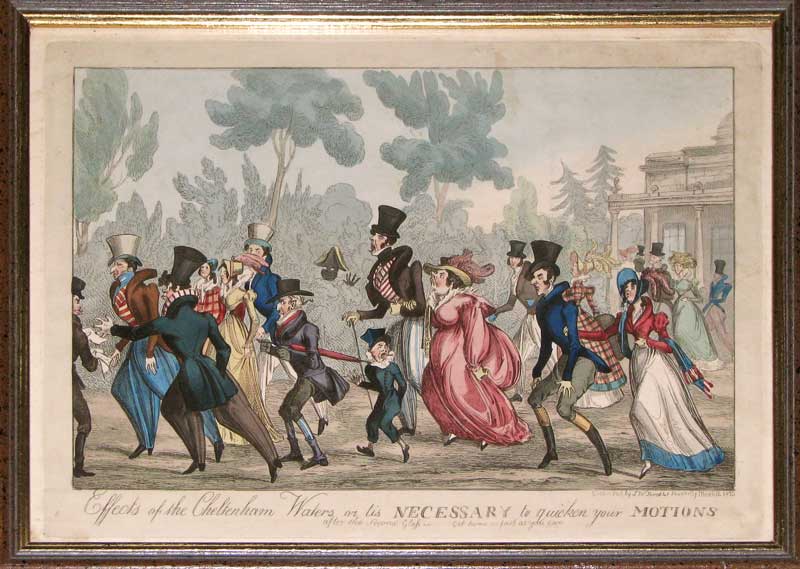

| Fores [William Heath] Effects of the Cheltenham Waters or tis necessary to quicken your motions.. .after the second glass, get home as fast as you can. 16 x 12 inches The raucous scene depicted here would have resonated with many of the Bon Ton in Regency England. We see a crowd of fashionably dressed people leaving the pump room and already reeling from the loosening "benefits" of the spa water! The water, it is claimed, will do wonderful things to quicken the bowel, especially after the second glass when it is recommended you "get home as fast as you can". Indigestion, gout, dropsy, diarrhoea and dysentery were all common complaints at the time so people were anxious to try anything that might help alleviate the symptoms. The benefits of Cheltenham water had been recognised as early as 1716 but it was only in 1788, when the town received its first and only visit from King George and Queen Charlotte, that the spa began to attain a fashionable status. Bath had long been the most popular place to "take the waters" but many other towns across the land attempted to get in on the act with varying degrees of success. From Leamington to Brighton, spas opened at a rate of knots. In Cheltenham the financial backing and enthusiasm came from a local self-made businessman called Joseph Pitt who built upon the town's reputation as a healthy place to go on retreat and invested in a lavish suite of buildings and surrounding pleasure gardens culminating in the magnificent Pittville Pump Room, completed around 1827 and seen here to the right of the scene. £650Framed |

